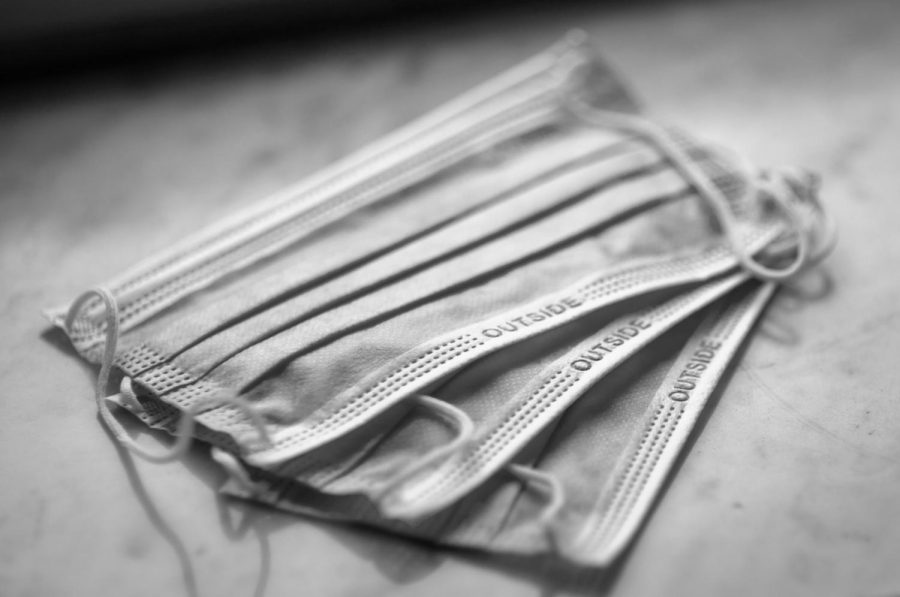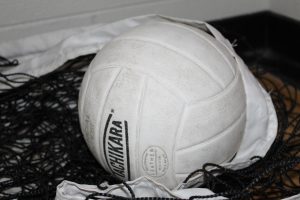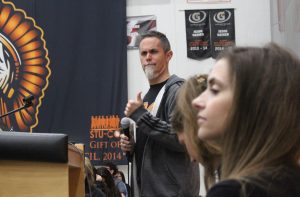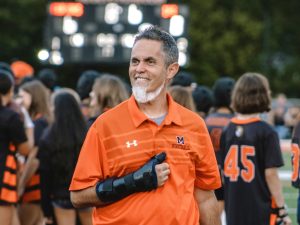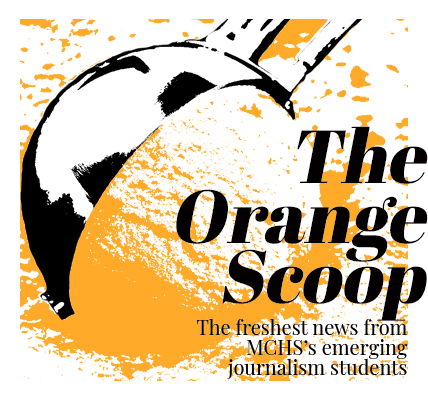Take cover
As the state determines how to provide people with the supplies they need, experts weigh the effectiveness of wearing masks
Mika Baumeister
As social distancing continues — and supplies dwindle — health experts and politicians debate whether or not face covering should be required in public — or if they prevent catching the virus at all.
April 24, 2020
When people have to leave their homes, go to the grocery store or pick up dinner, their fear of contracting COVID-19 is real. Many do keep their distance, but most still don’t wear masks. All it takes is one person to cough or sneeze on an object, and for another unsuspecting person to touch that object before it can be sanitized to spread the virus along. For this reason, many officials encourage wearing masks in public — and even mandate it, as Illinois Governor J.B. Pritzker did during a press conference on April 23.
People wear face masks to protect others when they are in public places. The immunocompromised and elders, in particular, are most vulnerable this virus. But others who are less vulnerable still worry they will catch this disease.
Medical experts say that putting on the extra layer of fabric will “shield” the germs from contaminating other people and items. The CDC says, “the use of simple cloth face coverings to slow the spread of the virus and help people who may have the virus and do not know it from transmitting it to others.”
DIY face masks and some others won’t fully protect from someone contracting the coronavirus, but may offer a level of safety and comfort. These masks do protect others from the virus by restricting contagion and remind others to keep at a safe distance.
The safest face masks are called N-95 masks. They are made with synthetic and polymer fibers, a type of melt-blown fabric, to act as an inner filtration layer to the virus. This mask gets the “95” part of its name by blocking 95% of tiny particles. Though these masks will protect a person from the virus, they should be reserved for medical workers who need them on the front lines. Sill, according to The New York Times, “Depending on the fabric and how it’s made, a homemade mask can sometimes protect the way a simple medical version does. And any face covering is better than nothing.”
Governor Pritzker expressed concern and stress at a March 30 press conference about not receiving enough face masks. He stated that the federal government shipped medical masks and not N-95 masks as he requested and, as a result paid $1.7 million to China for N-95 masks and other medical equipment. Pritzker’s spokeswomen Jordan Abudayyeh expressed, “These flights are carrying millions of masks and gloves our workers need. They’re scheduled to land in Illinois in the coming weeks and the state is working to ensure these much-needed supplies are protected and ready for distribution around the state.”
Many countries during this pandemic have learned that having an abundance of supplies and resources can keep people protected from this infectious disease. But the United States’s Strategic National Stockpile has not been restocked since the the pandemic started in March. The Department of Health and Human Sources estimates they will need 3.5 billion face masks over this year. Charles Johnson, the president of the International Safety Equipment Association, said, “I’m not aware of a major effort to restock the stockpile with N95 respirators after the 2009 drawdown.”
With China as the lead manufacturer of N-95 masks and the 12 million N-95 masks in the Strategic National Stockpile running low, many worry whether or not the federal government can supply the states with the proper medical equipment—and if it’s even their job to do so. Since masks are scarce, for the time being, it’s up to individual citizens to find creative ways to stay healthy and keep others safe.



